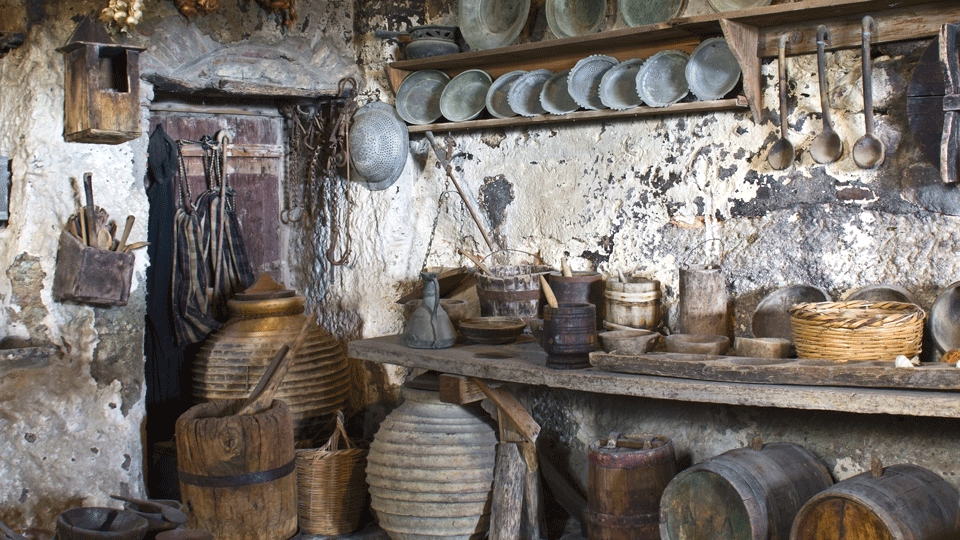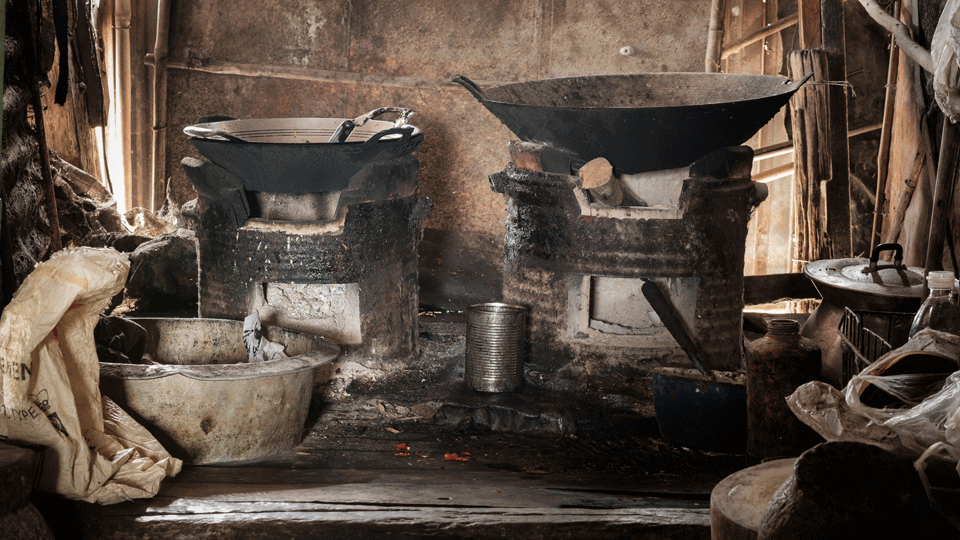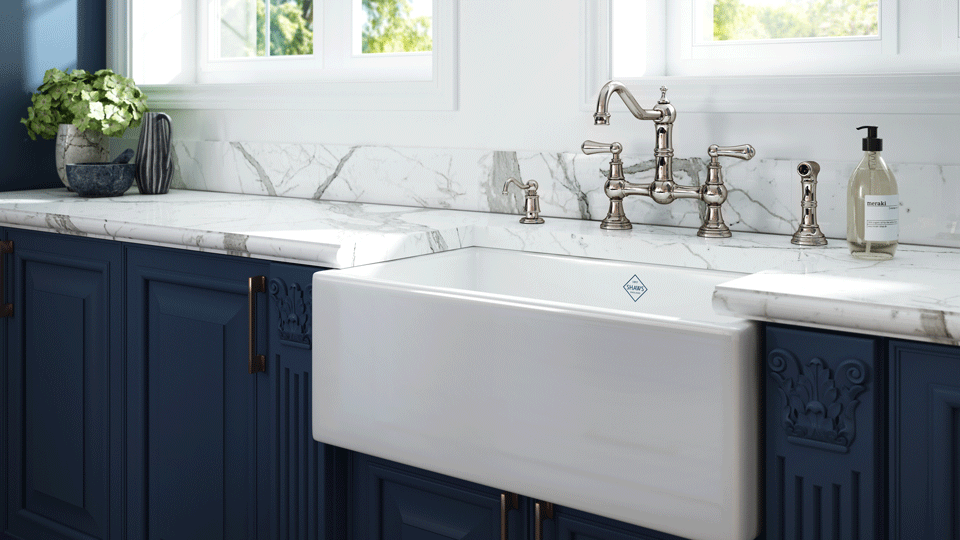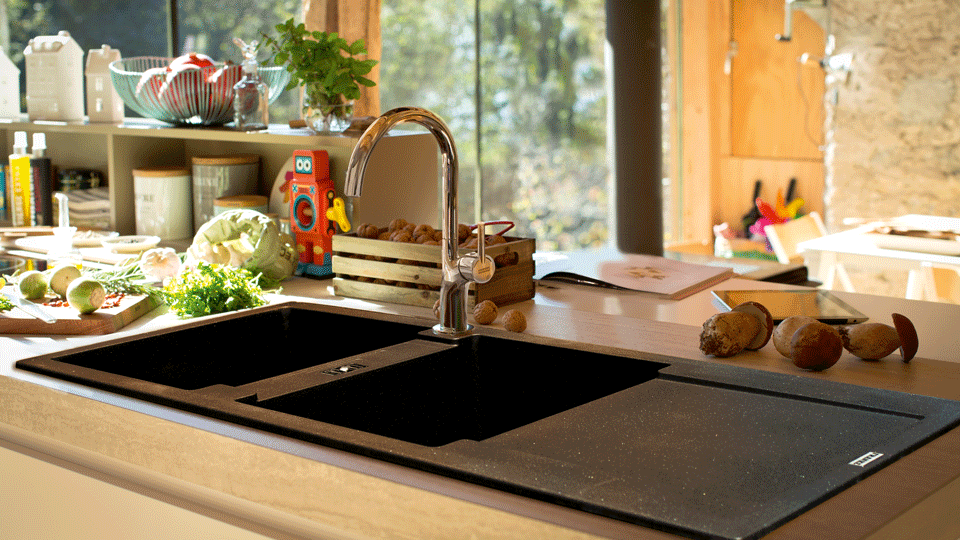The sink has become so much a part of the kitchen landscape we often take it for granted. It has given its name to a certain kind of gritty realism in writing – “kitchen sink realism”. “Everything but the kitchen sink” was the phrase coined in WW2 to describe the intense bombardment. So, where did this ubiquitous kitchen helper originate?
The kitchen wasn’t always the kitchen, so it follows that the sink wasn’t always the sink. Thousands of years ago, the primitive kitchen was nothing more than a pit where a fire was made. There may well have been a stone nearby where the unfortunate hunted animal was prepped for cooking. The early ‘hearth’ was made from clay or stone and used to keep the fire going. But no sink.
By the 5th century, the ancient Greeks (yes, them again!) had begun building a separate structure adjacent to the home for food prep. There was a clay oven. A cellar was dug to preserve ingredients. By the middle ages, a smokehouse was added. But still, no sink. Because... no indoor plumbing. Water was collected by hand from the local stream or lake in a primitive bucket. After use, the dirty water was probably chucked over the nearby crops!

It was really only in the 1800s that the concept of the kitchen sink as we know it started emerging. Around 1820 a large bowl-shaped vessel – called a dry sink – had the sole purpose of standing on a table or on a window sill, to hold water, still brought from the closest water source. This roughly fashioned bowl was made of wood, or metal, or stone. In the homes of the very wealthy, these vessels were lined with lead or zinc, and because they were linked to a water pump system, became known as wet sinks. Once used, the water still had to be emptied by hand.

Cut to nearly 100 years later. The Industrial Revolution had revolutionised much both in the workplace and at home. The old-style bowls were replaced by enamel, steel or stone sinks. Plumbing and drainpipes modernised the system of pumping in and pumping out the water. These sinks were mounted on the wall and had legs. If you were lucky, your sink contraption came with a draining board. The Butler’s Pantry emerged at this time... a storage space, mostly. But it was also the space where the Butler’s Sink was placed, also on legs. Italtile stocks an exclusive, limited edition range of Butler’s Sinks – Shaker Sinks by Shaws of Darwen – handcrafted from fireclay in the same time-honoured way as they were by earlier generations in the late 1890s.

The years after the two great wars saw the start of the functional kitchen with maxiumum efficiency – a triangular system of fridge, stove, sink. By this time, the kitchen sink was mounted on the kitchen cabinetry. So began the era of the streamlined kitchen, with the modern kitchen sink as we know it.
The famous Chef Julia Child, during the 1960s, had a startlingly new stainless-steel double sink with draining boards. She also had several pantries and more than one fridge! By the 80s, the kitchen island became vogueish, with its separate prep sink. And by the time the 2000s rolled around, the kitchen, with everything including the kitchen sink – or more than one kitchen sink! – became the heart of the home.
Today, stainless steel sinks, while still popular, have to arm wrestle with ever-evolving sink technology that has brought us heat resistant, impact resistant, bacteria resistant materials as showcased in Italtile’s collection of Franke Fragranite and Tectonite Sinks.

A last word on the latest 21st century sinkspiration ... weirdly enough we’ve gone full circle ... remember those primitive outdoor food prep areas our ancient ancestors used? Today, we have seen the rise and rise of the fully kitted out outdoor kitchen, complete with prep sinks and double sinks.
Reference:




















































































































































































































































Validate your login